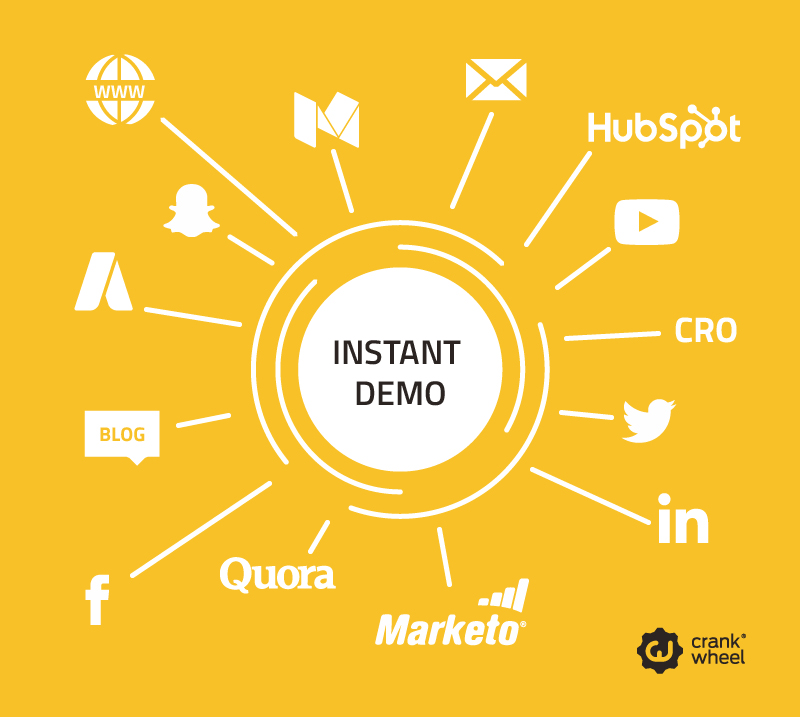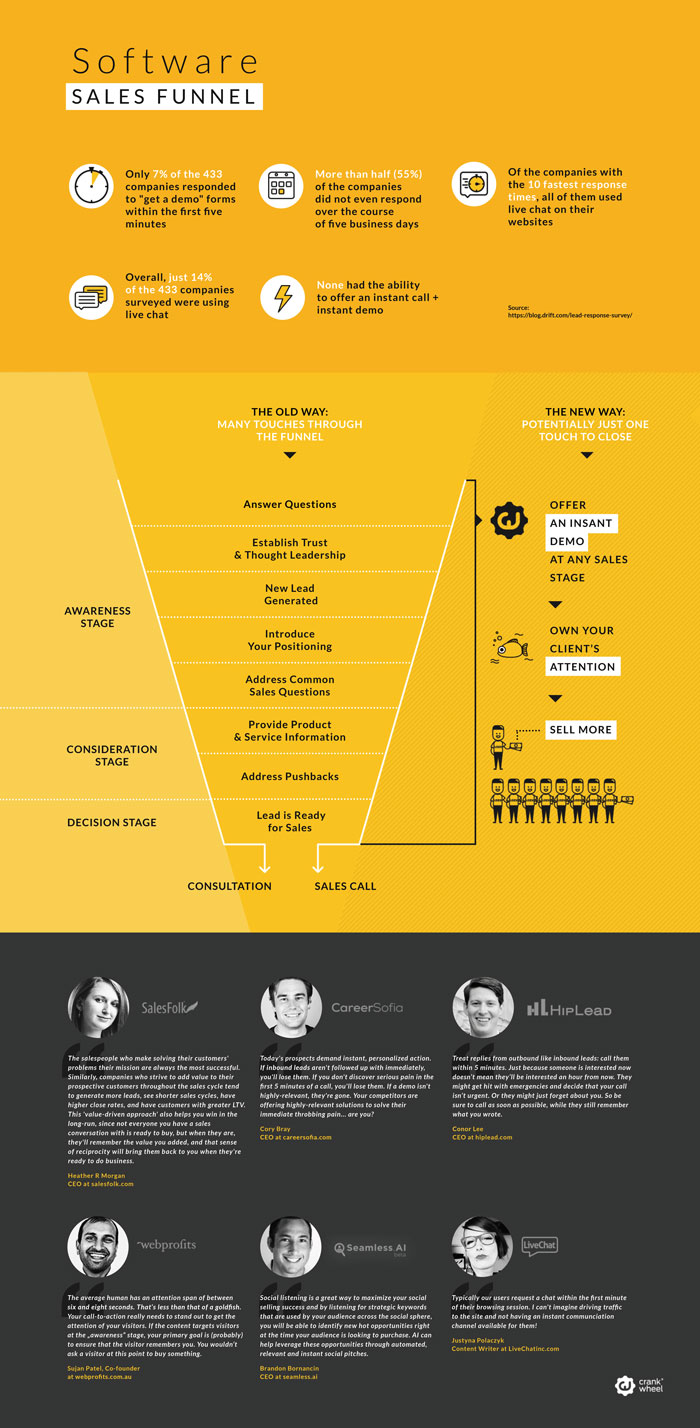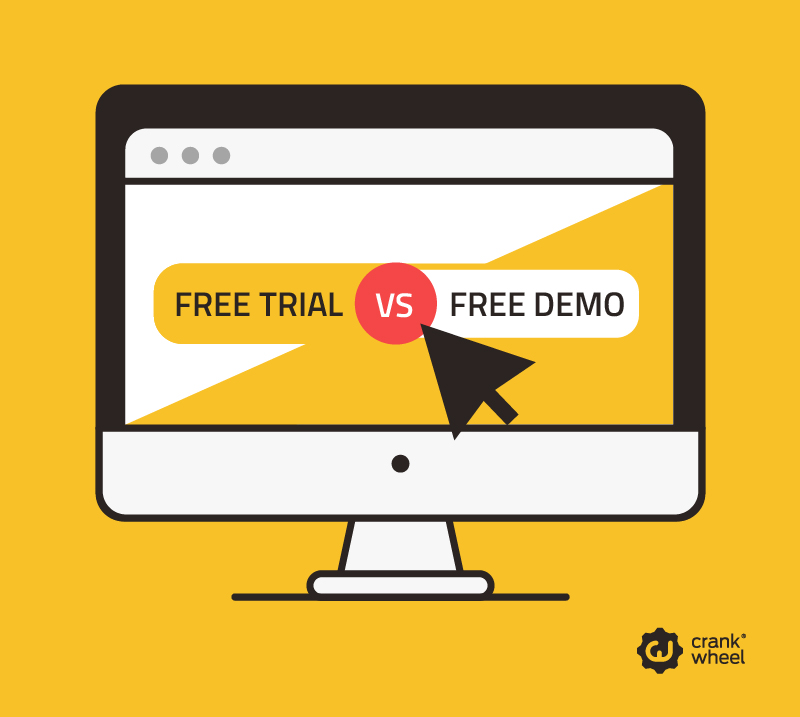How to Increase Software Sales Conversion Rates? Free Trial vs. Demo
Digital marketing, thankfully, is playing a role in ensuring you can reach a much wider audience of potential buyers. Websites and digital sales funnels make it easier to reach a wider group of buyers. With social media, content, email marketing, landing pages, and digital advertising, your product can reach hundreds or thousands of potential buyers every day. Reaching them is only the first step.

Embedding a Sales Cycle Online
When it comes to software sales, you need to remember that every interaction point is in service of closing deals. Every Tweet. Every Blog. Every FAQ, instructional article (part of the Onboarding process), video, image, screenshot, landing page, testimonial and other online asset is designed to make it easier to make a sale.
In marketing and sales, we have more tools than ever at our disposal to increase conversion rates. And best of all, many of them are entirely automated. Potential customers can also experience video walkthroughs, removing another barrier for those who want to take a closer look at a product.
Educating new users is still a massive challenge for many software companies. Trial and Demo abandonment rates are much higher when potential customers don’t understand how to use new software. You don’t need to invest in every tool on the market, but it pays to spend time to make it easier - one way or another - for trial users to familiarize themselves with the value your product creates.
This is why a free trial or demo proves immensely useful, usually after a potential customer has seen more of the product through a presentation meeting or Instant Demo call. But first, you need to get them on that call.

How to Increase Demo Call Uptake
Without a doubt, the most important feature of any software website is the calls-to-action (CTA). Most have several: Free Trial, Get a Demo and Contact Us. Live chat features are also popular, and another way to encourage web visitors to take a demo call or sign-up for a free trial.
Every single CTA plays a crucial role in conversion rate optimisation (CRO). Once a company has scaled enough, many have sufficient internal resources and processes to implement continuous A/B testing. But what happens when everyone is busy, and you don’t have the budget to put a CRO consultant on retainer?
Focus on core challenges. Look at your entire funnel and decide where to invest in A/B testing. Make this a quarterly marketing task, to make changes then test the impact. When I Work, an online employee scheduling tool, implemented a series of A/B tests using Optimizely, until one made a positive impact, resulting in 48% more demos.
When I Work made those changes before they could employ anyone with CRO management responsibilities. And yet, founders, marketing managers, sales and contractors/agencies all play a role in the CRO funnel. Once you start to scale - for example, after a series A - make sure your marketing plan is closely aligned with sales goals. Next, break this down into a series of quarterly and monthly KPIs. Assign these to relevant team members and contractors; e.g. designers implement A/B testing alongside copywriters, with input from sales. One of these targets should focus on increasing the number of instant demos from web visitors, as a way of getting more prospects into the pipeline.
Free Trial vs. Demo: What Approach Should We Use?
It depends on your software and target market. As a rule, software that is ‘off-the-shelf’, that requires little - if any - customization from one customer to the next and has numerous automated features, including an onboarding process, is ideally suited to a free trial.

Giving potential customers 14 or 30 days to use the software for free is one of the most effective and commonly used methods (in SaaS) to increase conversion rates. Now, more than ever, you need to look after them as prospects. Answer questions. Make sure customer service or marketing is providing them with the information they need to get the best use out of the software.
Don’t assume that every free trial user is a software wizard. Some require more handholding. This can make all the difference between a sale or a fail. However, not every software product fits so easily into the free trial model. Startups and SaaS companies - those with small and medium customers, or price points that make them low-budget purchases for large corporates - have been quick to adopt the relatively cheap free trial approach.
Remember about the downsides of trials, too. Not every product, and this concerns the simple ones too, is going to succeed when offered for free for a period of time. It’s not always about the variables of time or features, but rather the inherent inability of users to see value in products they need to institutionalize, but can’t due to internal formalities that essentially can make your trial non-viable.
Companies that sell into the mid-market and corporates, those that need to heavily customize software products, should consider the Instant Demo approach. Potential buyers generally need to convey more information. Workflows can be complex. A certain amount of one-on-one time is required to clarify key data points and sell specific, tailored areas of value to each prospect.
In both cases, you need a process that involves swift follow-up when a potential customer registers interest, analytics to track the flow of leads through the pipeline and the ability to give a prospect a quick demo as soon as they want more information.
